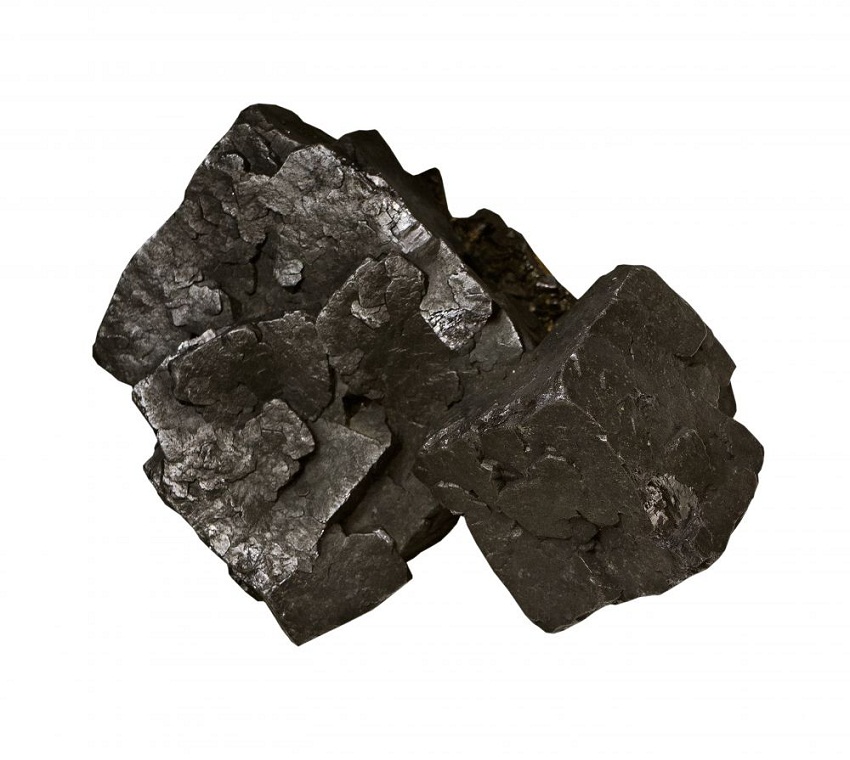The Unforgettable Lead Actors In Jaws: Crafting A Cinematic Masterpiece
The cinematic landscape was forever altered with the release of Steven Spielberg's Jaws in 1975, a film that not only redefined the summer blockbuster but also showcased the profound impact of its central performances. The raw tension, the palpable fear, and the unexpected moments of humor were meticulously woven together, largely thanks to the incredible synergy among its lead actors in Jaws. More than just a monster movie, Jaws is a masterclass in character-driven suspense. It relies heavily on the human element, the believable reactions of ordinary men facing an extraordinary threat. The trio at its heart – Chief Brody, Quint, and Matt Hooper – were brought to life by a cast whose talent elevated the film from a thrilling spectacle to an enduring piece of cinematic art. Their performances remain etched in the annals of film history, a testament to their dedication and skill.
The success of Jaws wasn't solely due to its groundbreaking special effects or Spielberg's masterful direction; it was the human drama, the clashing personalities, and the relatable fears embodied by the lead actors in Jaws that truly resonated with audiences worldwide. This article delves into the lives and careers of Roy Scheider, Robert Shaw, and Richard Dreyfuss, exploring how their unique talents converged to create one of cinema's most iconic ensembles and why their portrayal of ordinary men in extraordinary circumstances continues to captivate generations.
Table of Contents
- The Unforgettable Lead Actors in Jaws: Crafting a Cinematic Masterpiece
- Table of Contents
- Roy Scheider: The Reluctant Hero, Chief Brody
- Robert Shaw: The Enigmatic Hunter, Quint
- Richard Dreyfuss: The Brilliant Oceanographer, Matt Hooper
- Steven Spielberg's Vision and the Casting Masterstroke
- The Unbreakable Chemistry of the Trio
- Behind the Scenes: Challenges and Triumphs
- The Enduring Legacy of Their Performances
- Conclusion
Roy Scheider: The Reluctant Hero, Chief Brody
As Martin Brody, the police chief of Amity Island, Roy Scheider anchored the film with a grounded, relatable performance. Brody is an everyman, a city cop uncomfortable with the ocean, burdened by the responsibility of protecting his small community from an unseen terror. Scheider brought a quiet intensity and a palpable sense of fear to the role, making Brody's journey from skepticism to courageous action utterly believable. His performance is often cited as a masterclass in conveying vulnerability and reluctant heroism.
Biography of Roy Scheider
Roy Richard Scheider (1932–2008) was an American actor known for his versatile roles in both dramatic and action films. Before Jaws, he had already made a significant impact with his Oscar-nominated performance as Detective Buddy Russo in "The French Connection" (1971). His career spanned five decades, showcasing a range that extended beyond the action genre, including critically acclaimed roles in "All That Jazz" (1979), for which he received another Oscar nomination, and "Marathon Man" (1976).
Scheider's acting style was often characterized by a naturalistic approach, bringing authenticity and gravitas to his characters. He had a knack for portraying intelligent, often cynical men who found themselves in extraordinary circumstances. This made him an ideal choice for Chief Brody, a character who embodies the audience's own fear and disbelief when confronted with the impossible.
Personal Data: Roy Scheider
| Attribute | Detail |
|---|---|
| Full Name | Roy Richard Scheider |
| Born | November 10, 1932 |
| Died | February 10, 2008 (aged 75) |
| Birthplace | Orange, New Jersey, U.S. |
| Occupation | Actor |
| Notable Roles | Chief Martin Brody (Jaws), Detective Buddy Russo (The French Connection), Joe Gideon (All That Jazz) |
| Awards/Nominations | 2x Academy Award Nominations (The French Connection, All That Jazz) |
Bringing Brody to Life: The Everyman's Fear
Scheider's portrayal of Brody is central to the film's success because he grounds the fantastical premise in human reality. He's not a seasoned hero; he's a family man, a police chief who just wants to keep his town safe. His famous line, "We're gonna need a bigger boat," delivered with a mix of awe and dread, perfectly encapsulates his character's journey from a man out of his depth to one who rises to the challenge. His reactions mirrored those of the audience, making the horror all the more potent. The nuance Scheider brought to Brody ensured that despite the terrifying shark, the audience remained invested in the human struggle.
Robert Shaw: The Enigmatic Hunter, Quint
Robert Shaw's performance as Quint, the grizzled, shark-hunting veteran, is nothing short of legendary. Quint is a force of nature, a man consumed by his past and driven by a primal need to conquer the beast. Shaw infused the character with a captivating blend of menace, wisdom, and a haunting vulnerability, particularly during his iconic U.S.S. Indianapolis monologue. His presence on screen was electrifying, providing a vital counterpoint to Brody's caution and Hooper's scientific approach.
Biography of Robert Shaw
Robert Archibald Shaw (1927–1978) was a British actor, novelist, and playwright. Known for his intense and often formidable screen presence, Shaw had a distinguished career in theatre, film, and television. Before Jaws, he had already garnered critical acclaim for roles in "From Russia with Love" (1963), "A Man for All Seasons" (1966), for which he received an Academy Award nomination, and "The Sting" (1973). His ability to portray complex, often morally ambiguous characters with depth and conviction made him a formidable talent.
Shaw's personal life was as tumultuous as some of his characters, contributing to the raw edge he often brought to his performances. His dedication to his craft was evident in every role, and his portrayal of Quint remains one of the most memorable in cinema history, a testament to his unique acting prowess and commanding delivery.
Personal Data: Robert Shaw
| Attribute | Detail |
|---|---|
| Full Name | Robert Archibald Shaw |
| Born | August 9, 1927 |
| Died | August 28, 1978 (aged 51) |
| Birthplace | Westhoughton, Lancashire, England |
| Occupation | Actor, Novelist, Playwright |
| Notable Roles | Quint (Jaws), Donald "Red" Grant (From Russia with Love), Henry VIII (A Man for All Seasons), Doyle Lonnegan (The Sting) |
| Awards/Nominations | Academy Award Nomination (A Man for All Seasons) |
Quint's Intensity: A Force of Nature
Quint's character is the embodiment of man's struggle against nature, and Shaw delivered a performance that was both terrifying and strangely sympathetic. His monologue recounting the sinking of the U.S.S. Indianapolis is a standout moment, revealing the deep psychological scars that drive him. This scene, largely improvised and perfected by Shaw, showcases his incredible talent for storytelling and character immersion. The intensity he brought to Quint made him an unpredictable, yet essential, part of the shark hunt, proving why he is considered one of the most compelling lead actors in Jaws.
Richard Dreyfuss: The Brilliant Oceanographer, Matt Hooper
Richard Dreyfuss brought youthful exuberance and intellectual curiosity to the role of Matt Hooper, the wealthy, eager oceanographer. Hooper serves as the audience's guide into the scientific understanding of sharks, but he's also a vital source of levity and conflict within the trio. Dreyfuss's energetic and often humorous portrayal provided a much-needed balance to Brody's anxiety and Quint's grim determination, making him an indispensable part of the dynamic among the lead actors in Jaws.
Biography of Richard Dreyfuss
Richard Stephen Dreyfuss (born 1947) is an American actor known for his distinctive acting style, often characterized by rapid-fire dialogue delivery and a nervous energy that belied a sharp intellect. By the time he starred in Jaws, Dreyfuss was already a rising star, having appeared in "American Graffiti" (1973). His career exploded after Jaws, leading to an Academy Award for Best Actor for "The Goodbye Girl" (1977) and further acclaimed performances in films like "Close Encounters of the Third Kind" (1977) and "Mr. Holland's Opus" (1995).
Dreyfuss's ability to combine intelligence with a touch of neurotic charm made him a unique presence on screen. He often played characters who were passionate, articulate, and sometimes socially awkward, a perfect fit for the eager, slightly arrogant but ultimately good-hearted Hooper.
Personal Data: Richard Dreyfuss
| Attribute | Detail |
|---|---|
| Full Name | Richard Stephen Dreyfuss |
| Born | October 29, 1947 (age 76) |
| Birthplace | Brooklyn, New York, U.S. |
| Occupation | Actor |
| Notable Roles | Matt Hooper (Jaws), Elliot Garfield (The Goodbye Girl), Roy Neary (Close Encounters of the Third Kind) |
| Awards/Nominations | Academy Award for Best Actor (The Goodbye Girl) |
Hooper's Charm: Intellectualism Meets Action
Hooper's character provides the scientific perspective, often clashing with Quint's old-world, instinctual approach. Dreyfuss's performance makes Hooper endearing despite his initial arrogance. His enthusiasm for the shark, even as it threatens lives, is infectious, and his moments of genuine fear are deeply relatable. The dynamic between Hooper and Quint, in particular, drives much of the film's dramatic tension and comedic relief, showcasing Dreyfuss's versatility and his crucial role among the lead actors in Jaws.
Steven Spielberg's Vision and the Casting Masterstroke
The genius of Jaws extends beyond the screenplay and the mechanical shark; it lies profoundly in Steven Spielberg's astute casting choices. At the time, Spielberg was a relatively young director, and the production of Jaws was notoriously difficult, plagued by technical issues with the mechanical shark, affectionately nicknamed "Bruce." This unforeseen challenge, however, forced Spielberg to pivot, shifting the focus from showing the shark to building suspense through its unseen presence and, critically, through the reactions and interactions of his human characters.
Spielberg understood that the success of the film would hinge on the audience's connection to the three men on the Orca. He needed actors who could convey fear, determination, and humor, often simultaneously, and who could create believable chemistry under immense pressure. Roy Scheider was not the first choice for Brody, but his grounded everyman quality proved perfect. Robert Shaw initially resisted the role of Quint but was persuaded, bringing a gravitas and intensity that no other actor could have matched. Richard Dreyfuss, initially reluctant after a bad experience on a previous film, was personally convinced by Spielberg, and his youthful energy injected a vital dynamic into the trio.
This deliberate and, at times, serendipitous casting process was a masterstroke. Spielberg fostered an environment where the actors could develop their characters, often allowing for improvisation that enriched the dialogue and interactions. The real-life tensions and camaraderie that developed among Scheider, Shaw, and Dreyfuss during the arduous filming process on the open ocean undoubtedly bled into their performances, creating an authentic bond that audiences could feel. Spielberg's vision, combined with the raw talent and dedication of his chosen lead actors in Jaws, transformed a troubled production into a timeless classic.
The Unbreakable Chemistry of the Trio
What truly elevates Jaws from a thrilling monster movie to a cinematic masterpiece is the electrifying chemistry between its three lead actors in Jaws. Brody, Quint, and Hooper represent distinct facets of humanity's response to an overwhelming threat: the everyman's fear, the hardened veteran's resolve, and the intellectual's curiosity. Their clashing personalities, initially a source of friction, gradually evolve into a grudging respect and ultimately, a shared bond in the face of mortal danger.
- Brody and Quint: The tension between Scheider's cautious Brody and Shaw's reckless Quint is palpable. Brody represents law and order, Quint represents a wild, untamed force. Their arguments, often laced with dark humor, highlight their differing philosophies on how to confront the shark. Yet, as the hunt progresses, a mutual understanding, born of shared peril, begins to form.
- Hooper and Quint: The most volatile, yet fascinating, dynamic is between Dreyfuss's modern, scientific Hooper and Shaw's traditional, superstitious Quint. Their intellectual sparring, often descending into childish taunts, provides much of the film's comic relief. However, their eventual collaboration, particularly during the cage scene and the final confrontation, underscores their shared bravery despite their differences.
- Brody and Hooper: Brody and Hooper share a more immediate camaraderie, both being outsiders to Quint's world. Hooper often serves as Brody's confidant and scientific advisor, helping him understand the nature of their enemy. Their bond is one of mutual respect and shared vulnerability, grounding the more extreme personality of Quint.
This intricate web of relationships, expertly portrayed by the lead actors in Jaws, creates a compelling human drama that runs parallel to the thrilling shark hunt. It's the reason why, even when the shark is off-screen, the film remains utterly captivating. Their interactions feel authentic, messy, and deeply human, making their eventual triumph against the shark all the more satisfying.
Behind the Scenes: Challenges and Triumphs
The production of Jaws was notoriously difficult, often described as a "nightmare" by those involved. Filming on the open ocean presented myriad challenges that tested the patience and resolve of the cast and crew, particularly the lead actors in Jaws. These difficulties,

Facts About Lead | Live Science

The Origins and Qualities of Lead - Midland Lead

Lead Facts, Symbol, Discovery, Properties, Uses